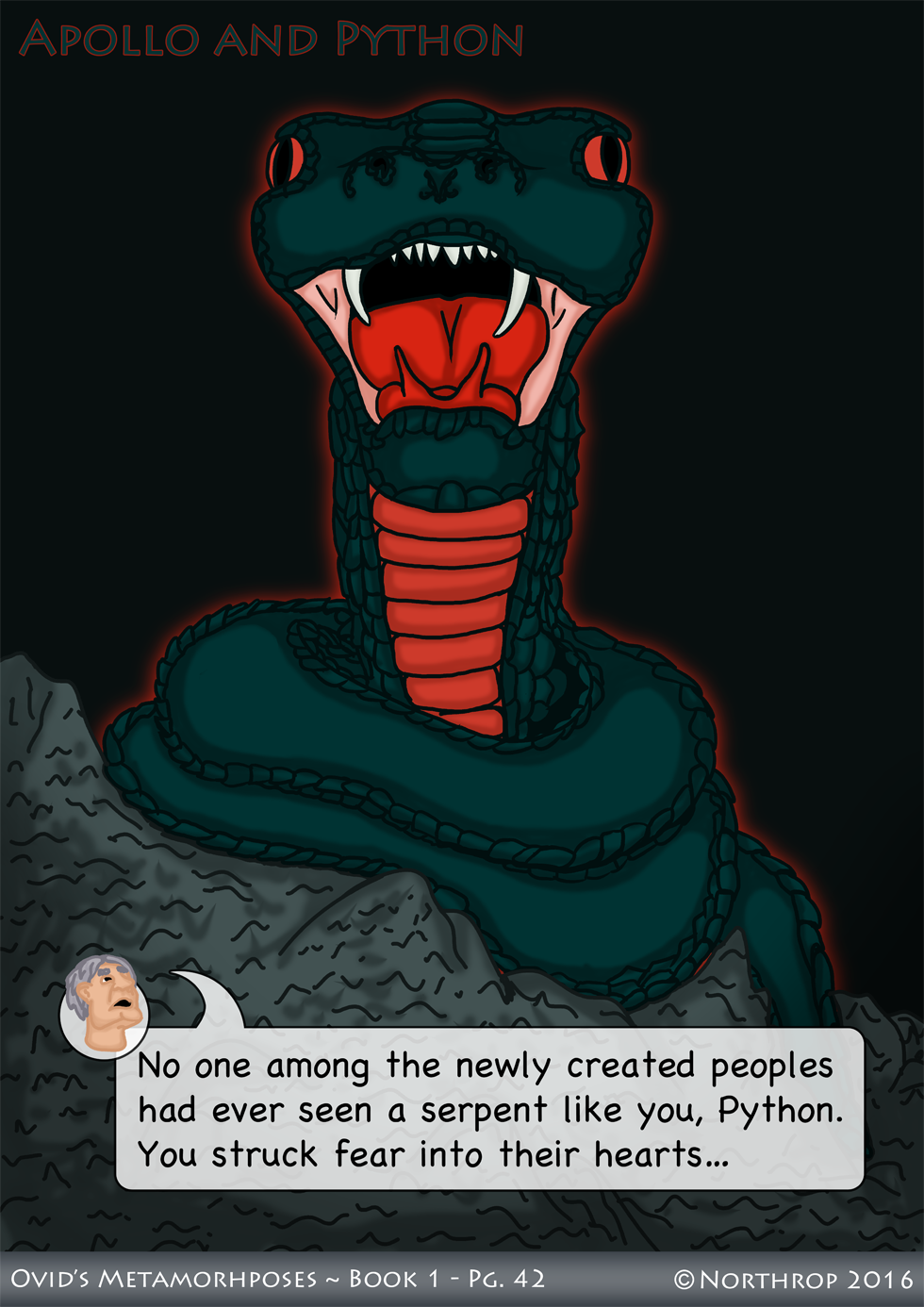Met. 1.439-40 – Apollo and Python
[…] populisque novis incognita sperpens
terror eras; tantum spatii de monte tenebas.
(Met. 1.439-40)
[…] to the newly-created peoples you were an unknown serpent
you were a terror; you took up so much space on your mountain.
Oh hello, Python! Yep, it’s monster-time, and giant snakes make a great opener. Their threateningly phallic form, aggressive disposition and insidious lethality swirl together with our instinctual fear of them as humans, passed down from our evolutionary ancestors. It is a perfect recipe for fear and wonderment. The primordial nature of serpents also seems to be a common trait of the human imagination. From the Hebrew story of the Serpent in the Garden of Eden, to the Aztec creator god Quetzalcoatl, humans imagine snakes at the beginnings of time. This may be due to their liminal nature: snakes can travel to many places humans can’t, including into the depths of the Earth. They can communicate with both the gods of the Earth and those of the Sky, making them good go-betweens for important moments of cosmic history. Greek mythology is absolutely littered with them (think of Medusa, Hydra, baby-Hercules etc.), and Ovid seems particularly keen to cram as much snakey-ness into the first several books as possible. Therefore, the Metamorphoses continues the tradition of placing snakes at the very beginnings of time, and will call them again and again as the universe takes shape.
Now, there is the question of just what kind of snake Python is. “Isn’t he a… python?”, I hear you tentatively ask. No, no he is not, and I didn’t intend to draw him as one. In truth, Ovid’s Python is apparently a unique snake (“unknown serpent” as Ovid says at line 439); I tried to reflect this by looking at various pictures of snakes, and giving Python the attributes I liked best. Pythons, in real life, come from sub-Saharan Africa and south-East Asia – both are regions that Ovid would have regarded as quasi-mythic in themselves. He certainly would not have had extensive knowledge of their fauna, nor would previous authors he was drawing on. More importantly, the Python of Greek myth is the source of the name for the real-life snakes, not the other way around. The origins of the mythic animal’s name are in dispute, but “Homer”* says that it came from the way his body rotted after being slain by Apollo (pythein is Greek for “to rot” – Hymn to Apollo ll. 372-4). Ovid actually leaves out the whole business of rotting. What he puts in its place, you’ll have to discover in the next few pages.
*Not really the Homer, but the author of the Homeric Hymn to Apollo, who is almost certainly NOT the author of the Iliad or the Odyssey.

Discussion ¬